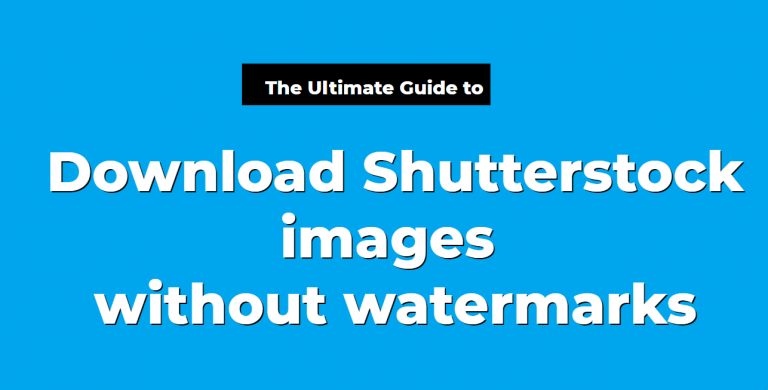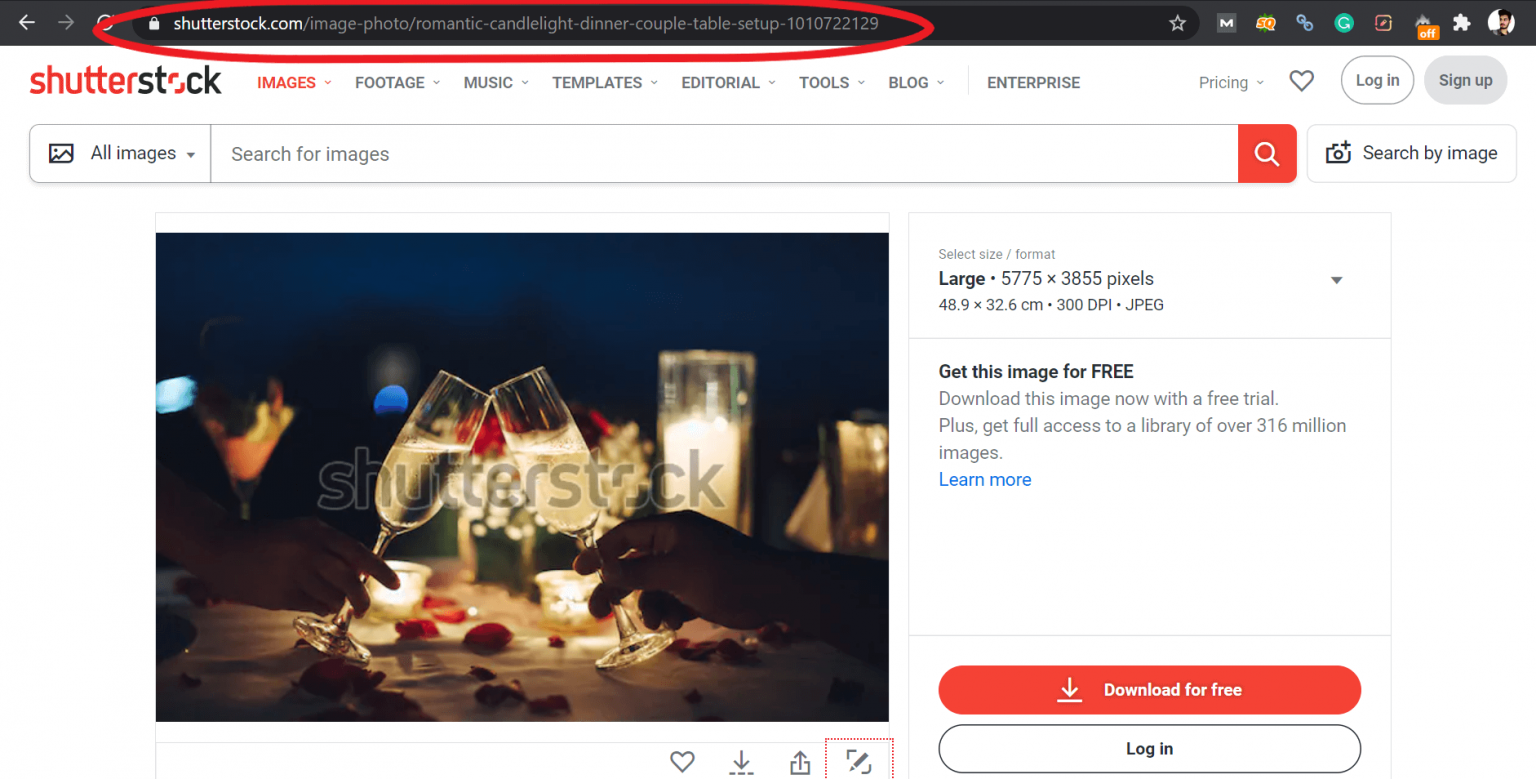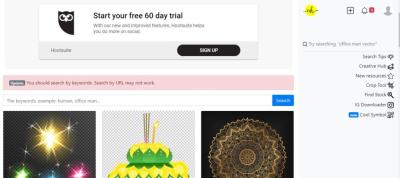Looking to spice up your project with stunning images? Shutterstock is a fantastic resource, but it’s important to use their photos the right way. Using images without proper licensing can lead to legal trouble, so understanding how to access Shutterstock photos legally is key. Whether you’re a blogger, marketer, or designer, knowing the ins and outs of licensing ensures you stay compliant and avoid those pesky watermarks. In this guide, we’ll walk you through the essentials of legally obtaining
Understanding Shutterstock’s Licensing Options

Shutterstock offers a variety of licensing options tailored to different needs, whether you’re using images for personal projects, commercial campaigns, or large-scale distributions. Knowing which license to choose is crucial to ensure you’re legally covered and that you can use the images as intended.
Standard License: This is the most common license and is suitable for most uses like websites, social media, blogs, and advertisements that don’t generate significant revenue or large print runs. With a standard license, you can:
- Use images in digital media such as websites, apps, and social media posts
- Include images in print materials up to 500,000 copies
- Modify or edit images as needed
However, the standard license has restrictions, such as prohibiting the use of images in merchandise or products intended for resale.
Enhanced License: If your project involves higher risks or larger distribution, an enhanced license is the way to go. It allows for:
- Unlimited copies and impressions
- Use in items for resale, like t-shirts, mugs, or posters
- Inclusion in digital templates for resale
- Use in broadcast advertising and large-scale campaigns
This license is more expensive but provides broader rights, giving you confidence to use Shutterstock images in more commercial or high-volume contexts.
Additionally, Shutterstock offers extended licenses for specific needs, and some images may come with exclusive licensing options. Always review the specific license details for each image before purchasing or downloading. Remember, obtaining images through official licensing ensures you’re on the right side of copyright laws and helps you avoid watermarks and legal issues down the line.
How to Purchase Shutterstock Photos for Unwatermarked Use

If you’ve ever come across a stunning Shutterstock photo and thought, “Wow, I need this for my project,” but then hesitated because of the watermarks, you’re not alone. The good news is, purchasing the right license is straightforward and ensures you’re using images legally and ethically. Here’s how you can do it:
First, navigate to the Shutterstock website and find the image you want. Once you open the image page, you’ll see options to buy different licenses. Shutterstock offers various plans, but for most individuals or small businesses, a standard license is sufficient for web use, marketing materials, social media, and other typical applications. If you need the image for print or high-resolution projects, consider an enhanced license.
Next, select the number of images you want to purchase or choose a subscription plan. Shutterstock provides flexible options:
- On-Demand Packs: Buy a set number of images upfront, with discounts for bulk purchases.
- Subscriptions: Access a specific number of images per month or year at a lower per-image cost.
After choosing your plan, proceed to checkout and create an account if you haven’t already. Once purchased, you’ll be able to download the high-resolution, watermark-free images immediately. These images are now legally yours to use according to the license you purchased.
Keep in mind:
- Always read the license terms carefully—what’s permitted under a standard license versus an enhanced license.
- Download the image directly from Shutterstock to ensure authenticity and to avoid any unauthorized sources.
- Maintain proof of purchase and licensing in case you need to verify your rights in the future.
In essence, purchasing Shutterstock photos is about selecting the right plan that fits your needs, completing a simple transaction, and then using the high-quality, unwatermarked images legally and confidently. It’s a reliable way to access premium images without the risk associated with watermark removal or unauthorized use.
Alternative Methods to Access Shutterstock Photos Legally
If buying images directly from Shutterstock isn’t always the ideal option for you—maybe due to budget constraints or infrequent needs—there are still legitimate ways to access Shutterstock photos without watermarks. Let’s explore some of these methods:
1. Use Shutterstock’s Free Trial
Shutterstock often offers free trials for new users. Typically, you can sign up and download a set number of images at no cost. During the trial, you’ll get access to high-resolution, watermark-free images, giving you a risk-free way to test the service or get the images you need temporarily.
Just remember to cancel before the trial ends if you don’t want to be billed automatically. Also, ensure you comply with the trial’s terms of use.
2. Participate in Shutterstock Contributor Program
If you’re a photographer or designer, you can become a Shutterstock contributor. By submitting your own photos, you can earn royalties when others purchase your images. While this doesn’t give you direct access to Shutterstock’s library, it’s a way to legally share and sell your work on the platform.
3. Look for Public Domain or Creative Commons Licensed Images
Some websites curate collections of images that are free to use legally, including for commercial purposes. These aren’t Shutterstock images, but they can sometimes serve as excellent alternatives. Examples include:
- Unsplash
- Pexels
- Pixabay
Always verify the license terms—most of these images are free to use without attribution, but some may have restrictions. They won’t replace Shutterstock’s high-quality, niche images, but they’re a legitimate way to access beautiful visuals without watermarks.
4. Use Licensed Stock Photo Marketplaces
Other stock photo sites like Adobe Stock, iStock, or Depositphotos offer similar licensing options. Sometimes, these platforms run discounts or offer free images, so it’s worth exploring them for budget-friendly, legal access to high-quality photos.
In summary, the key to accessing Shutterstock images legally without watermarks is to use authorized channels—whether through purchasing, free trials, or reputable free image sites. Avoid shady sources or attempts to remove watermarks, as these can lead to legal issues and undermine the hard work of photographers and creators. Playing by the rules ensures you get the images you need while respecting copyright laws and supporting the creative community.
Tips for Avoiding Watermarked Images and Staying Compliant
If you’ve ever browsed Shutterstock, you’ve probably noticed those familiar watermarked images. They’re a clear sign that the image is protected and not yet purchased. To ensure you’re staying on the right side of copyright laws and using images legally, here are some practical tips for avoiding watermarked images and staying compliant:
Understand Shutterstock’s Licensing System
First things first, get familiar with Shutterstock’s licensing options. They primarily offer two types:
- Standard License: Suitable for most commercial uses like websites, social media, and advertisements.
- Enhanced License: Needed for larger print runs or products for resale.
Knowing which license you need helps you avoid accidental misuse. Remember, watermarked images are just previews; they’re only for visual reference until you purchase the appropriate license.
Always Purchase the Correct License Before Downloading or Using Images
The most straightforward way to avoid watermarked images is to buy the image first. Once you’ve purchased the license, you can download the high-resolution, watermark-free version. Using images without proper licensing can lead to legal troubles, so always ensure you’ve completed the purchase process before using an image publicly.
Use Shutterstock’s “Lightbox” Feature to Plan Your Selections
Shutterstock offers a handy ‘Lightbox’ feature that lets you save and compare images before making a purchase. This way, you can organize your picks, ensure you’re choosing images you want to buy, and avoid accidental use of watermarked images.
Be Wary of Free or Unauthorized Sources
While it might be tempting to find free images online, many sites host images without proper licensing, and these often come with watermarks or restrictions. Stick to Shutterstock or other reputable paid providers to ensure you have legal rights to use the images without watermarks and avoid potential copyright infringement.
Respect the Watermarks as a Reminder
Remember, watermarks serve as a reminder that the image is protected content. If you see a watermark, it means you haven’t purchased the image yet. Using it without licensing is illegal and can result in fines or legal action.
Summary of Tips:
| Tip | Why it Matters |
|---|---|
| Understand licensing options | Ensures proper use and avoids unintentional infringement |
| Purchase before use | Guarantees access to high-quality, watermark-free images legally |
| Use planning tools like Lightbox | Helps organize images and avoid accidental use of watermarked versions |
| Avoid unauthorized sources | Prevents legal issues and ensures image rights are respected |
| Respect watermarks | Serves as a clear indicator to purchase and use legally |
Conclusion and Best Practices for Using Shutterstock Photos Legally
Using Shutterstock photos legally doesn’t have to be complicated. The key is understanding the licensing process, purchasing images before use, and respecting the rights of creators. Here are some best practices to keep in mind:
Always Purchase the Correct License
Before using any Shutterstock image, make sure you’ve bought the appropriate license. This not only keeps you compliant but also supports the artists and photographers behind the images.
Keep Records of Your Purchases
Maintain documentation of your licenses, receipts, or license certificates. If ever questioned about your rights to use an image, having proof can save you time and trouble.
Use Images According to License Terms
Each license comes with specific terms—such as restrictions on redistribution, modification, or use in sensitive contexts. Always review and adhere to these terms to stay compliant.
Stay Updated on Shutterstock’s Policies
Licensing rules and policies can change, so it’s a good idea to periodically review Shutterstock’s terms of service. Staying informed helps you avoid inadvertent violations.
Educate Your Team or Clients
If you’re working with a team or clients, ensure everyone understands the importance of licensing and legal use. This prevents accidental misuse and reinforces good practices.
Use Alternative Resources When Necessary
If Shutterstock doesn’t have the perfect image or your budget is tight, consider other reputable paid stock photo providers or subscription services that offer clear licensing terms. Just remember, always buy the image first!
In Summary
Legally obtaining Shutterstock photos involves a simple but vital process: purchase the right license, respect the licensing terms, and keep good records. By following these best practices, you can confidently use stunning images in your projects without worry about legal issues or watermarks.


